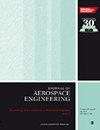碳纤维增强聚合物无衬里压力容器罐可行性研究
IF 1.1
4区 工程技术
Q3 ENGINEERING, AEROSPACE
Proceedings of the Institution of Mechanical Engineers Part G-Journal of Aerospace Engineering
Pub Date : 2024-09-19
DOI:10.1177/09544100241283422
引用次数: 0
摘要
复合材料压力容器用于航空航天工程,储存推进剂、氮气和氧气等流体。它们还用于生命支持系统、宇航员的高性能压力服、气球和飞艇的氦气罐。在众多类型的复合材料中,碳纤维复合材料因其高强度重量比、高热膨胀性、耐腐蚀性、抗疲劳性和抗冲击性以及设计灵活性而得到越来越广泛的应用。为了提高压力容器的容积,我们尝试了无内衬概念。在空间有限的航空航天应用中,提高容积效率至关重要,在有限的尺寸内最大限度地提高存储容量非常重要。不仅是容积效率,减少渗透性问题、提高耐用性和寿命、更好的热连续性和简化制造工艺也使这项研究在压力容器领域具有重要意义。本研究论文涉及无内衬气缸的制造和开发。测试样品经过了多项测试:拉伸测试、冲击测试、剪切测试(3P 弯曲)、泄漏测试和压力测试。测试样品能够承受 20 巴的压力而不发生故障。此外,还进行了数值计算,并与实验结果进行了比较。差异仅为 3%。非对称二甲基肼(UDMH)和发红硝酸都可以储存在这种气瓶(RFNA)中。与传统的复合材料外包装压力容器不同,无衬里复合材料储罐完全依靠复合材料外壳作为防渗层,并承受所有压力和环境负荷。无衬里消除了衬里与复合材料界面分层或失效的可能性。本文章由计算机程序翻译,如有差异,请以英文原文为准。
Feasibility study of carbon-fiber reinforced polymer linerless pressure vessel tank
Composite pressure vessels are used in aerospace engineering for storing fluids such as propellants, nitrogen, and oxygen. They are also used in life-support systems, High-performance pressure suits for astronauts, Helium Tanks for Balloons and Airships. Among many types of composites, Carbon fiber composites uses have been increasing due to its high strength to weight ratio, high thermal expansion, corrosion, fatigue and impact resistance and design flexibility. In order to improve the volume of the pressure vessel, the liner-less concept is tried. This increased volume efficiency is crucial in aerospace applications where space is at a premium and maximizing storage capacity within limited dimensions is important. Not only the volume efficiency, but also the Reduced Permeability Concerns, Enhanced Durability and Longevity, better thermal continuity and simplified manufacturing process make this research significant in the area of pressure vessel. This research paper deals with the fabrication and development of a cylinder without a lining. The test sample was subjected to several tests: tensile test, impact, shear test (3P Bending), leak test and Pressure test. The test sample was capable of withstanding 20 Bars without failure. The numerical results were also performed and compared with the experimental results. The difference was only 3%. Unsymmetrical dimethyl hydrazine (UDMH) AND red-fuming nitric acid can both be stored in this cylinder (RFNA). Unlike traditional composite overwrapped pressure vessels, the liner-less composite tanks rely completely on the composite shell to act as a permeation barrier as well as handling all pressure and environmental loads. The absence of a liner eliminates the potential for delamination or failure at the interface between the liner and the composite material.
求助全文
通过发布文献求助,成功后即可免费获取论文全文。
去求助
来源期刊

CiteScore
2.40
自引率
18.20%
发文量
212
审稿时长
5.7 months
期刊介绍:
The Journal of Aerospace Engineering is dedicated to the publication of high quality research in all branches of applied sciences and technology dealing with aircraft and spacecraft, and their support systems. "Our authorship is truly international and all efforts are made to ensure that each paper is presented in the best possible way and reaches a wide audience.
"The Editorial Board is composed of recognized experts representing the technical communities of fifteen countries. The Board Members work in close cooperation with the editors, reviewers, and authors to achieve a consistent standard of well written and presented papers."Professor Rodrigo Martinez-Val, Universidad Politécnica de Madrid, Spain
This journal is a member of the Committee on Publication Ethics (COPE).
 求助内容:
求助内容: 应助结果提醒方式:
应助结果提醒方式:


